Charger Xtar XP4c
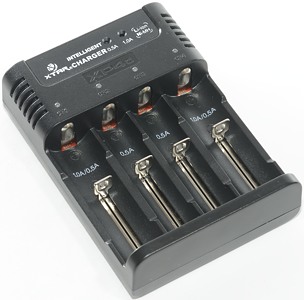
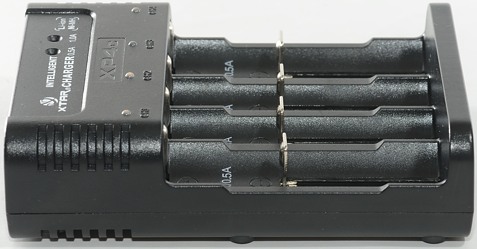

This is a cheaper version of the XP4, where the XP4 can charge with 1A when using all slots, this charger can only charge with 0.5A when using all slots, but it can still charge with 1A on two slots.
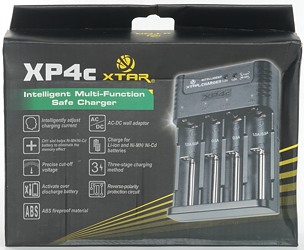

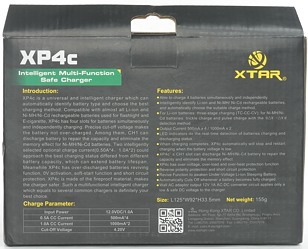

The cardboard box lists lot of specifications, battery types and features.
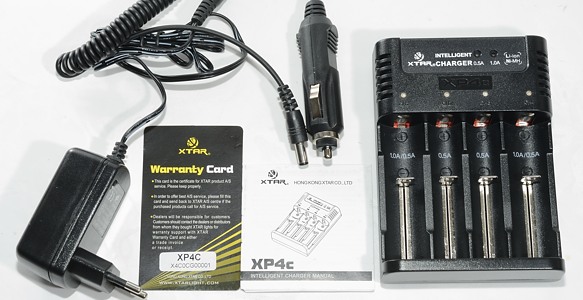
The box contains the charger, a mains adapter, a car adapter, manual and a warranty card.
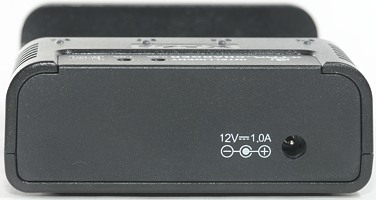
The charger has a 12V DC power connector.
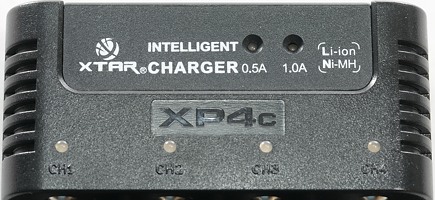
The charger has a red/green led for each slot and two blue leds to show charge current.
The red/green led shows red when charging and green at all other times.
On slot #1 the led can also flash red/green when doing a discharge (This function can only be done on slot #1).
The blue leds switches between 0.5A and 1A depending on what slots are loaded with batteries.
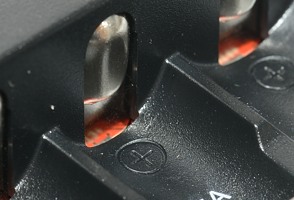
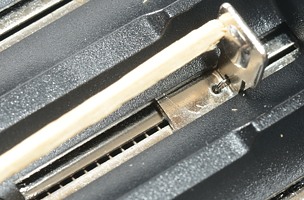
The slots uses the usual construction and works well. They can handle batteries from 30mm to 72 mm long.
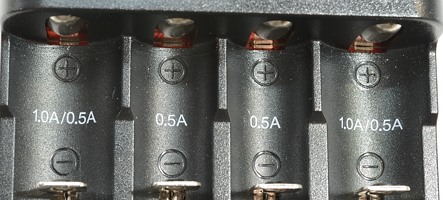
The slots are clearly marked with charge current. There is no switch to select charge current, it depends on the battery placement.
If a battery is placed in one or both of the two center slots the charge current will be 0.5A for all slots. If only the outer slots are used the charge current will be 1A.
A full battery in slot #2 or #3 will reduce current to 0.5A in slot #1 and #4.


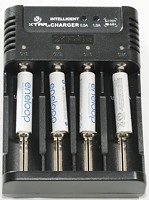
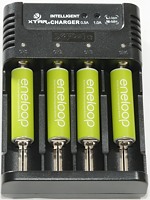
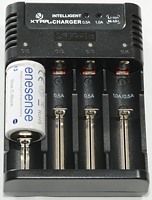
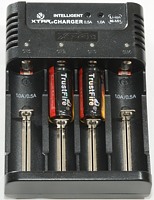
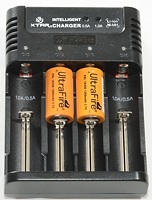
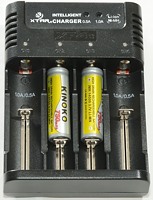
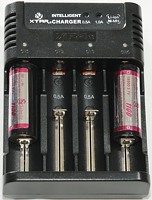
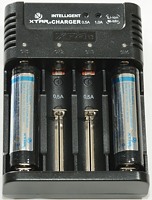
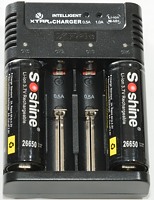
The charger can handle 72 mm long batteries, inclusive flat top cells.
Measurements
- Discharges with 0.5mA when not connected to power, except slot #1 that sometimes can discharge with a couple of 100mA (This is bad).
- Charges with less than 0.2mA when LiIon battery is full.
- Will start if battery voltage drops below 3.9 volt.
- Below 0.23 volt the charger will charge with about 1 mA.
- At 0.23 volt the charger will assume NiMH and start charging with about 100mA.
- After about 120 seconds at 0.9 volt or above the charger will switch to full NiMH charge current.
- The charger will assume NiMH below 2 volt and LiIon above 2 volt.
- When the voltage is above 2.9 volt it will switch to full LiIon charge current.
- Charger will restart charging after power loss or battery insertion.
- Current selection is based on battery in slot, not if it is charging or not.
LiIon charging
%20%231.png)
Charging a LiIon in slot #1 looks good with a CC/CV charge curve and a termination around 70mA
%20%232.png)
%20%233.png)
Slot #2 and #3 only charges with 0.5A, but does also have a nice CC/CV curve, this time with around 40mA termination current.
%20%234.png)
Slot #4 looks like slot #1
%20%231.png)
Because the 2600mAh cell has a fairly long CV phase, it takes about the same time as a 3100mAh to charge (The long CV phase might be due to cell age).
%20%231.png)
The higher charges fine.
%20%231.png)
My old 16340 cell is handled without problems at 1A.
%20%232.png)
And also at 0.5A
%20%232.png)
%20%232.png)
No problems with the two other small cells.
.png)
Charging four batteries at the same time will reduce the current to 0.5A in all slots. The above chart is recorded in slot #1, except temperature that is from slot #3.
.png)
Using my lab power supply I can see that the 1A current rating is fine, it only needs 0.9A.

M1: 36,9°C, M2: 38,2°C, M3: 38,3°C, M4: 35,9°C, M5: 45,3°C, M6: 40,3°C, HS1: 47,8°C
Because the charger is only using 0.5A when charging four cell, it is fairly easy to keep the temperature down.

When powered on the charger will apply a low charge current (100mA), if the voltage is above 2 volt it will soon engage LiIon charge and ramp the current up.
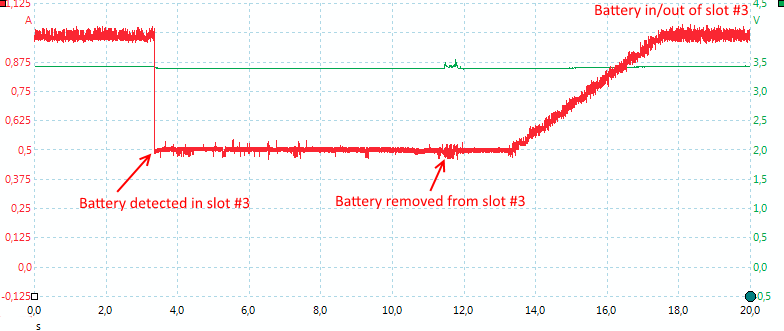
Here I put a battery in slot #3, this reduces the charge current in slot #1 and #4, until I remove the battery again.
NiMH charging
%20%231.png)
NIMH batteries are also charged fine, a close look at the temperature track shows that the charger stops just about where the battery starts heating up.
The termination looks like a maximum voltage termination.
%20%232.png)
It works the same way at 0.5A charge current in slot #2.
%20%233.png)
Slot #3 looks the same.
%20%234.png)
In slot #4 it looks like it has stopped slight earlier.
%20%231.png)
With the XX battery the charger does use -dv/dt and the battery heats up before it stops.
%20%232.png)
An interesting detail to notice is that the trickle charge stops after about 2 hours, i.e. it is used as a top-off charge, not a trickle charge.
%20%231.png)
The Powerex does also have a nice -dv/dt termination at 1A.
%20%232.png)
But the charger is a long time detected it is full when charging at 0.5A. This is because the charge current is on the low side for this battery.
%20%231.png)
A full battery is detected in about 4½ minute.
.png)
No problem with 4 batteries.
.png)
When charging NiMH the charger does not need 1A from the power supply, but considerable less.

M1: 38,2°C, M2: 40,3°C, M3: 40,1°C, M4: 38,6°C, M5: 44,2°C, M6: 41,0°C, HS1: 51,3°C
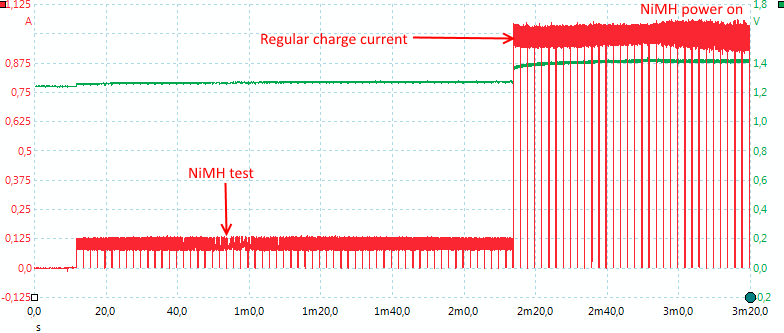
The charger is applying the low current for about two minutes, before it switches to full charge current.
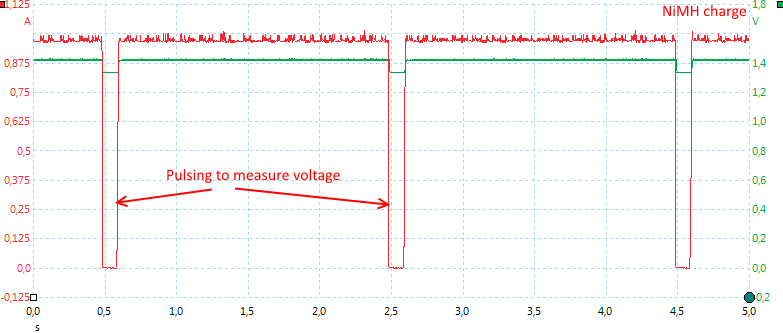
As usual with NiMH chargers it is pulsing.
NiMH Cycle
Slot #1 has a special function, it can do a discharge. This is used to refresh NiMH batteries that have not been used for a couple of months.
To engage this function put a NiMH in slot #1, when charging starts remove the battery and put it in again. The led will start flashing red/green.
%20%231.png)
The function is rather slow, it takes many hours, because it done at fairly low current levels. First a discharge with 300mA down to 0.9 volt, then a 500mA charge.
LiIon+NiMH charging
Charging both NiMH at the same time is also possible. Measurement are on slot #1, temperature on slot #3
.png)
No problem found here.
.png)
This does also work fine.
Testing the mains input with 2500 volt and 5000 volt between mains and low volt side, did not show any safety problems.
Conclusion
As usual Xtar chargers works very good for LiIon, this time the NiMH charging does also work good.
The current selection is easy to use and very predictable.
A single cell discharge function is not very useful, it takes too long to discharge 4 batteries. If it had been on all channels it would be more useful.
But there is one problem with the charger: It is best to connect power before putting the batteries in (Or connect power just after putting the batteries in).
The reason for this is slot #1, it will sometimes discharge a battery, if it is put in when the charger is without power (I did not see this problem if the charger loses power).
I will call this a good charger.
Notes
The charger was supplied by a Xtar for review.
Here is an explanation on how I did the above charge curves: How do I test a charger
























%20%231.png)
%20%232.png)
%20%233.png)
%20%234.png)
%20%231.png)
%20%231.png)
%20%231.png)
%20%232.png)
%20%232.png)
%20%232.png)
.png)
.png)



%20%231.png)
%20%232.png)
%20%233.png)
%20%234.png)
%20%231.png)
%20%232.png)
%20%231.png)
%20%232.png)
%20%231.png)
.png)
.png)



%20%231.png)
.png)
.png)